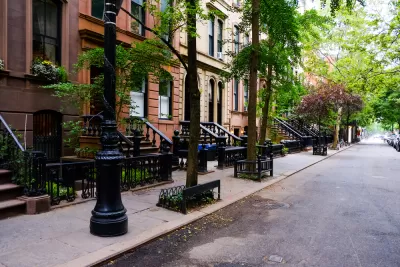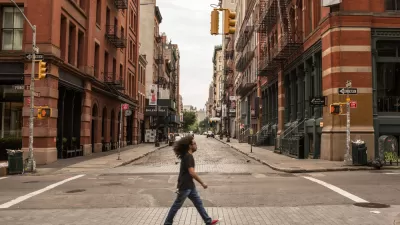A new study out of New York City reveals the worsening effects of segregation due to the city's "community preference" affordable housing policy, Seattle sets out to craft a policy of its own.

As Seattle develops a new community preference tool, damning evidence emerges of the policy failing to achieve its stated goals in New York City—actually exacerbating some of the outcomes it intended to mitigate.
J. David Goodman reports from New York City, where a report has recently been made public, after years of resistance from the city, into the city's affordable housing lotteries:
The report was finally released on Monday, following a federal court ruling, and its findings were stark: The city’s policy of giving preference to local residents for new affordable housing helps perpetuate racial segregation.
White neighborhoods stay white, black neighborhoods black, the report found.
Andrew A. Beveridge, a sociology professor at Queens College, conducted the research, and the portrait it paints is "far different picture than the one offered by Mayor Bill de Blasio, who has touted his record on housing as he runs for president."
One day before the news of the report broke in New York City, Josh Cohen was writing in Seattle on the subject of "community preference" housing policies tools. Cohen notes the controversial nature of community preference policies also while explaining how such policies work:
Used by New York, San Francisco, Portland and other city governments, preference policies give some applicants a better chance of landing a spot in a new affordable housing development, usually based on whether they live or work in the development's neighborhood. Typically, developers set aside a portion of the new units for a second lottery involving people who qualify for community preference.
Preference policies are controversial. Detractors say they entrench segregation by keeping poor people in poorer neighborhoods. Supporters say they give people a better chance to stay in their community as new investment comes in and the cost of living rises. People on both sides of the issue worry about how the policy intersects with federal fair housing law, which is meant to prevent discrimination.
Little did Cohen know that a report would emerge the vest next day confirming the detractors' argument. What Cohen did know is that the city of Seattle voted on June 24 to authorize the creation of a community preference policy. "Now Seattle’s Office of Housing is creating guidelines for developers who choose to use a preference policy when they lease new affordable housing projects."

Alabama: Trump Terminates Settlements for Black Communities Harmed By Raw Sewage
Trump deemed the landmark civil rights agreement “illegal DEI and environmental justice policy.”

Planetizen Federal Action Tracker
A weekly monitor of how Trump’s orders and actions are impacting planners and planning in America.

The 120 Year Old Tiny Home Villages That Sheltered San Francisco’s Earthquake Refugees
More than a century ago, San Francisco mobilized to house thousands of residents displaced by the 1906 earthquake. Could their strategy offer a model for the present?

In Both Crashes and Crime, Public Transportation is Far Safer than Driving
Contrary to popular assumptions, public transportation has far lower crash and crime rates than automobile travel. For safer communities, improve and encourage transit travel.

Report: Zoning Reforms Should Complement Nashville’s Ambitious Transit Plan
Without reform, restrictive zoning codes will limit the impact of the city’s planned transit expansion and could exclude some of the residents who depend on transit the most.

Judge Orders Release of Frozen IRA, IIJA Funding
The decision is a victory for environmental groups who charged that freezing funds for critical infrastructure and disaster response programs caused “real and irreparable harm” to communities.
Urban Design for Planners 1: Software Tools
This six-course series explores essential urban design concepts using open source software and equips planners with the tools they need to participate fully in the urban design process.
Planning for Universal Design
Learn the tools for implementing Universal Design in planning regulations.
Clanton & Associates, Inc.
Jessamine County Fiscal Court
Institute for Housing and Urban Development Studies (IHS)
City of Grandview
Harvard GSD Executive Education
Toledo-Lucas County Plan Commissions
Salt Lake City
NYU Wagner Graduate School of Public Service





























